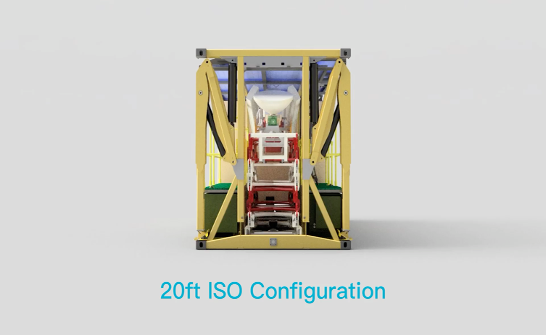CiTech (Critical Infrastructure Technologies) (CSE: CTTT) (OTC: CTTTF).

The company’s lead product set is a range of rapidly deployable, high-capacity communications platforms called the NEXUS 16.

Upon completing the rollout of its technology, CT aims to become an established player in the high-capacity mobile and rapidly deployable markets, delivering long-range communications systems into those places where they are most critically needed.
Maui will no longer be identified as paradise but as a historical reference to a horrific fire that will likely kill hundreds. So far, 80 souls, with the death toll rising quickly.
WAILUKU, Hawaii (AP) — In the hours before a wildfire engulfed the town of Lahaina, Maui County officials failed to activate sirens that would have warned the entire population of the approaching flames. Instead, they relied on sometimes confusing social media posts that reached a much smaller audience. Power and cellular outages for residents further stymied communication efforts. (City News)
Forget that CiTech’s Nexus 16 above right is a fabulous product. Dropping one by helicopter or flatbed truck would restore communications in 30 minutes. 30 minutes. The fire was Tuesday am, and communications were still not fixed on Friday.
CiTech has a direct and critical response to disasters with its NEXUS 16 communications tower. Arguably, the first loss in a disaster is critical communication systems and infrastructure. These exceptional products have a place in almost every town on earth and the quick ability to deploy.
Once communications are lost, the solar-powered, self-contained NEXUS can be deployed and restore contacts in 30 minutes. 30 minutes. Dwell on that for a moment. The NEXUS 16 has a minimal environmental impact on all investors and everyone else. With a small equipment room, the device is solar-powered, does not need a level base, and uses very little diesel. No specialized training or operators are required.
“We can get an entire town back on the air again, in 30 minutes without anything other than a truck that can move it,” CiTech’s engineer Andrew Hill said, “We found a way to build a room which could house the technology that phone companies need or mining companies need, or emergency services need or more importantly defence needs as well.”
I’m not going to drone on. There is only one conclusion. And I won’t use this forum to exploit what could be one of the greatest disasters of our generation.
If FEMA had a few hundred Nexus 16s—that work with Starlink and other service platforms—ready to deploy– I submit that the quick restoration of communication with the CiTech platform would save property.
And more importantly, lives.
Posted on behalf of Ci-Tech
